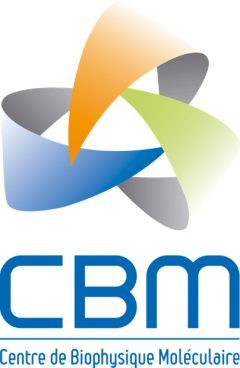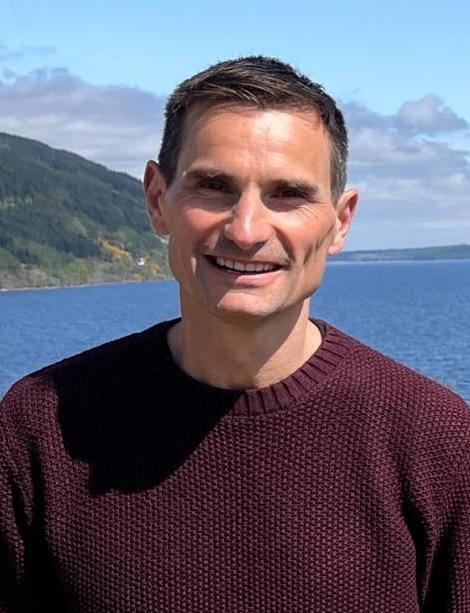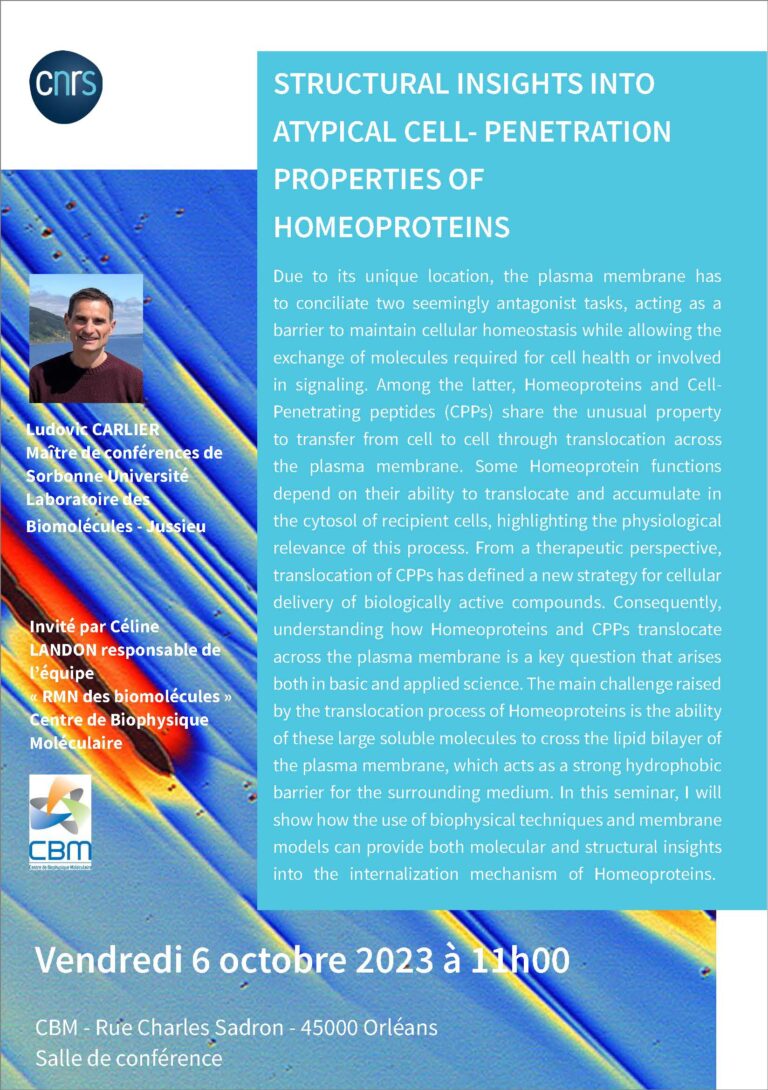Typologie d'actualités: Team Molecular, Structural and Chemical Biology
ARTE-Thema investigative report on neonicotinoids and insects, with interviews of J.-M. Bonmatin

On 5 July 2022, ARTE broadcast an investigative report as part of its THEMA evenings entitled: Insecticide - How agrochemicals killed insects.
This report was filmed at the Centre for Molecular Biophysics of the CNRS with several interviews with Jean-Marc Bonmatin, as well as with other members of the Task Force on Systemic Pesticides (http://www.tfsp.info/en/) interviewed in several countries.
The report is based on the book published in 2019 by journalist Stéphane Foucart of Le Monde which was entitled "Et le monde devint silencieux". The ARTE report is available in six languages.
The CNRS Institute of Chemistry reports on its website the work of CBM researchers
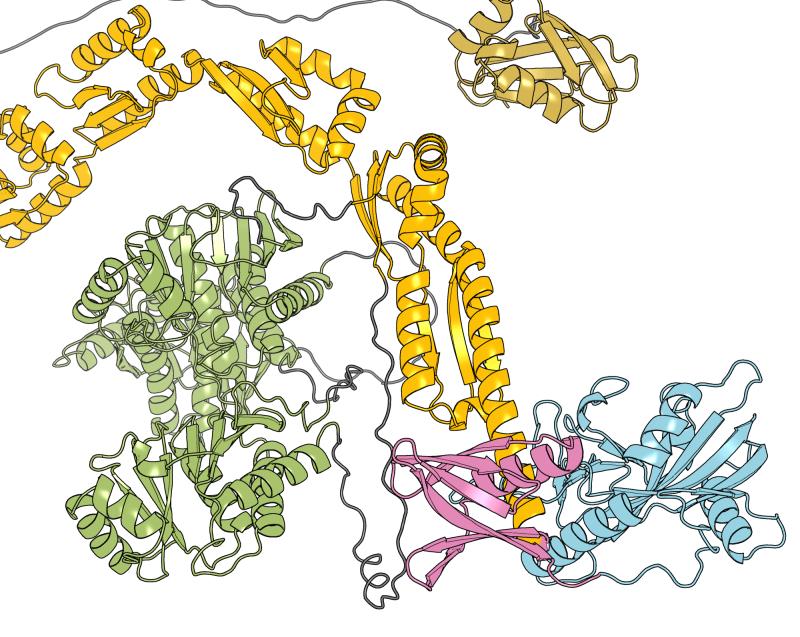
Understanding the function of proteins requires knowing their structures.
To do this, scientists used artificial intelligence to predict the shape of a class of "PARP" type proteins that regulate DNA repair, gene transcription, and antiviral response, but are also potential targets for new cancer therapies. This approach, published in the journal Nucleic Acids Research, could be extended to many other families of proteins.
Voir l'actualité sur le site de l'Institut de Chimie du CNRS
Référence
Updated protein domain annotation of the PARP protein family sheds new light on biological function
Marcin J. Suskiewicz, Deeksha Munnur, Øyvind Strømland, Ji-Chun Yang, Laura E. Easton, Chatrin Chatri , Kang Zhu, Domagoj Baretić, Stéphane Goffinont, Marion Schuller, Wing-Fung Wu, Jonathan M Elkins, Dragana Ahel, Sumana Sanyal, David Neuhaus & Ivan Ahel
Journal Nucleic Acids Research
https://academic.oup.com/nar/advance-article/doi/10.1093/nar/gkad514/7199335?login=true
35th Biotechnocentre symposium – October 19 and 20, 2023
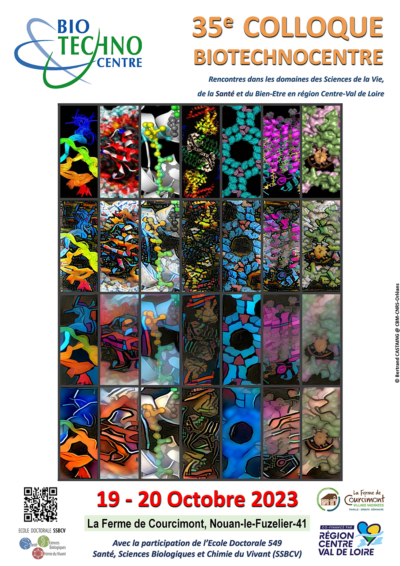

Structural insights into the SUMOylation reaction
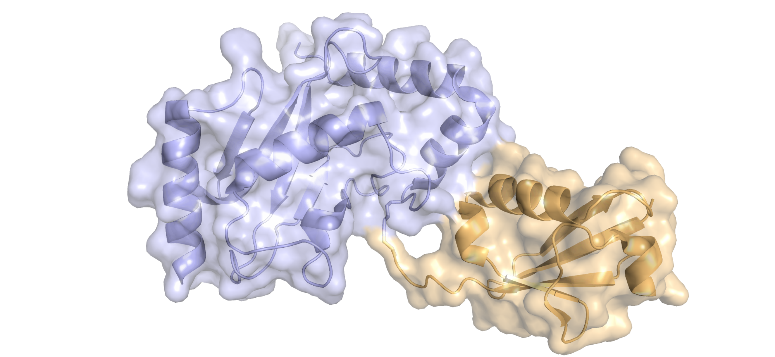
SUMOylation and ubiquitylation are related protein modifications where small proteins (SUMO or ubiquitin) become covalently attached to protein substrates to regulate their function. Both these protein modifications are essential for viability and are strongly implicated in human disease, but SUMOylation remains less studied than ubiquitylation. A key step in both SUMOylation and ubiquitylation reactions is the formation of a reactive thioester molecule in which SUMO or ubiquitin becomes linked to a cysteine residue on proteins called E2. It is from there that SUMO/ubiquitin is transferred onto the final protein substrate. In the study just published in Journal of Biological Chemistry, the researchers from the CBM used site-directed mutagenesis to create a version of the human E2-SUMO thioester that – unlike the native reactive thioester – is chemically stable and can be studied with structural biology methods. The crystal structure of this molecule revealed potential regulatory mechanisms for the SUMOylation process. The mutagenesis approach was inspired by a method developed for the yeast SUMOylation pathway by the group of Chris Lima.
The article, authored by the CBM engineer Stéphane Goffinont and other members of the team “Protein Post-Translational Modifications and DNA Repair: Structure, Function, and Dynamics”, is the first publication from the project “SUMOwriteNread”. The project is led by the CBM researcher Marcin J. Suskiewicz and funded by the Horizon Europe programme of the European Union (European Research Council Starting Grant no 101078837).
Stéphane Goffinont, Franck Coste, Pierre Prieu-Serandon, Lucija Mance, Virginie Gaudon, Norbert Garnier, Bertrand Castaing and Marcin Józef Suskiewicz
Structural insights into the regulation of the human E2∼SUMO conjugate through analysis of its stable mimetic.
Journal of Biological Chemistry, Volume 299, Issue 7, 2023, 104870 - https://www.sciencedirect.com/science/article/pii/S0021925823018987
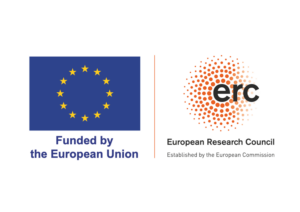
Edison ZHAMUNGUI thesis defense

Edison ZHAMUNGUI, PhD student in the "Functional mass spectrometry of molecular assemblies" team, will defend his thesis on Wednesday July 5, 2023 at 10:30 a.m. at the Charles Auditorium, CNRS Campus in Orléans.
Download the thesis defense notice.
Abstract:
Although membrane proteins (MPs) represent 2/3rds of potential therapeutic targets, so far only 10% of these proteins have been targeted by a marketed drug. This is due to a lack of structural information which derives from the challenges associated with producing MPs and the need for solubilizing agents. Major biological functions rely on critical proteins interacting with other biomolecules such as nucleic acids, peptides, or other proteins, thus forming larger complexes. The size of these complexes (i.e., 100 000 Da or higher) as well as their high heterogeneity impose limitations on their structural characterization.
In the past decade, the characterization of noncovalent complexes by native mass spectrometry has emerged as a valuable ally of traditional and emerging Structural Biology techniques such as X-ray crystallography, nuclear magnetic resonance (NMR) spectroscopy, or cryo-EM. Here we show how a novel method called Native Liquid MALDI (NALIM) can be used to answer questions about the structural biology of membrane proteins and large soluble complexes.
NALIM-TOF MS relies on the known strengths of MALDI-TOF MS such as a high tolerance to contaminants, a low sample consumption and in principle, a limitless mass range of analysis. With carefully controlled non-denaturing conditions and instrumental parameters optimizations, NALIM enabled rapid access to characterize various membrane transporter proteins, including an ABC transporter and an ion channel. The stabilization of the dimer of Bacillus subtilis multidrug resistance (BmrA) protein by ligand binding was demonstrated and the binding site of the Tx7335 actitoxin in the potassium ion channel KcsA shown to differ from the site of pore blockers. To get closer to the in vivo conditions of the native membrane's lipid bilayer, NALIM was applied to the characterization of membrane proteins in proteoliposomes and membrane vesicles.
The development of the NALIM method involved exploring different proteins to find a suitable calibrant for high mass range analysis. A preparation of alpha1-antitrypsin (α1AT) that forms a molecular ladder over a wide mass range was validated as a calibrant. Furthermore, instrumental parameters were tuned to improve the resolution and sensitivity in the high mass range, making it possible to obtain information on the stoichiometry and stability of large soluble complexes. For instance, NALIM revealed the stoichiometry and specificity of ZBTB8A oligomers and the stabilizing effect of NusG on the Rho hexamer.
In summary, NALIM was shown to be a fast and straightforward method for the structural characterization of membrane protein complexes and large soluble oligomers in their native state. The information obtained through NALIM can be of significant value in the fields of molecular biology and pharmacology. Moreover, NALIM promises to be an alternative for new strategies of drug discovery.
Combining computers and experiments to study the domain composition and function of the PARP protein family
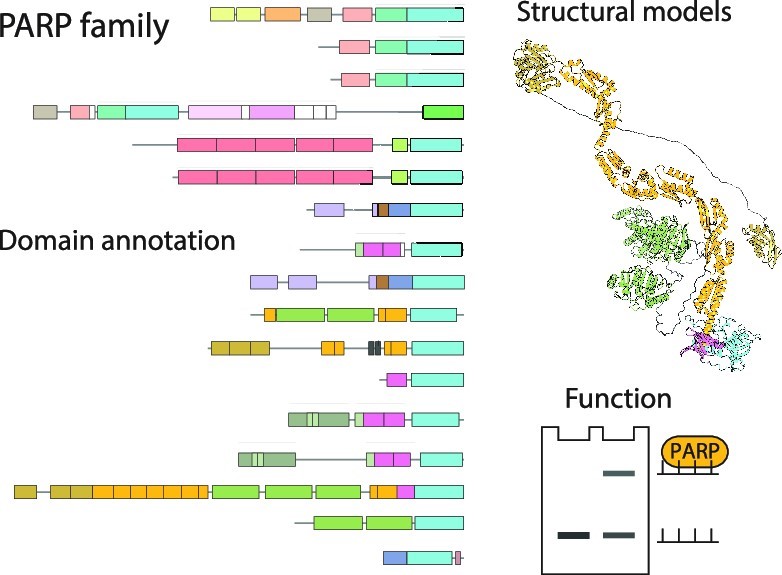
Prediction of protein structure with the artificial intelligence (AI)-powered program AlphaFold2 – hailed by the Science magazine, the biggest scientific breakthrough in 2021 – has rapidly revolutionised protein science. Trained on a large dataset of experimentally determined protein structures, AlphaFold2 can generate a model of a protein’s three-dimensional (tertiary) structure given its amino-acid sequence (primary structure). AlphaFold2 models are highly reliable, thus offering a good basis for understanding the function of proteins whose experimental structure is not available or is not complete.
In the present article, published in the journal Nucleic Acids Research, a collaborative team composed of researchers from Orléans, Oxford, and Cambridge, carefully examined AlphaFold2 models of an important group of proteins called the PARP protein family, which includes 17 proteins in human. These proteins regulate DNA repair and many other cellular pathways by catalysing a protein post-translational modification called protein (ADP-ribosyl)ation. The analysis of AlphaFold2 models allowed annotating all protein domains in this family, several of which have not been annotated before. This analysis served as a starting point for various accompanying experiments which validated some of the insights gained from the predicted models. Featuring an accessible introduction into the new computational approaches, the study can serve as a blueprint for scientists studying other protein families.
Two of the CBM members involved in the study are Marcin J. Suskiewicz and Stéphane Goffinont, both from the group “Protein Post-Translational Modifications: Structure, Function, and Dynamics”. This work is linked to a grant from Ligue contre le Cancer CSIRGO 2023.

References :
Marcin J Suskiewicz and others, Updated protein domain annotation of the PARP protein family sheds new light on biological function, Nucleic Acids Research, 2023;, gkad514,
https://doi.org/10.1093/nar/gkad514
